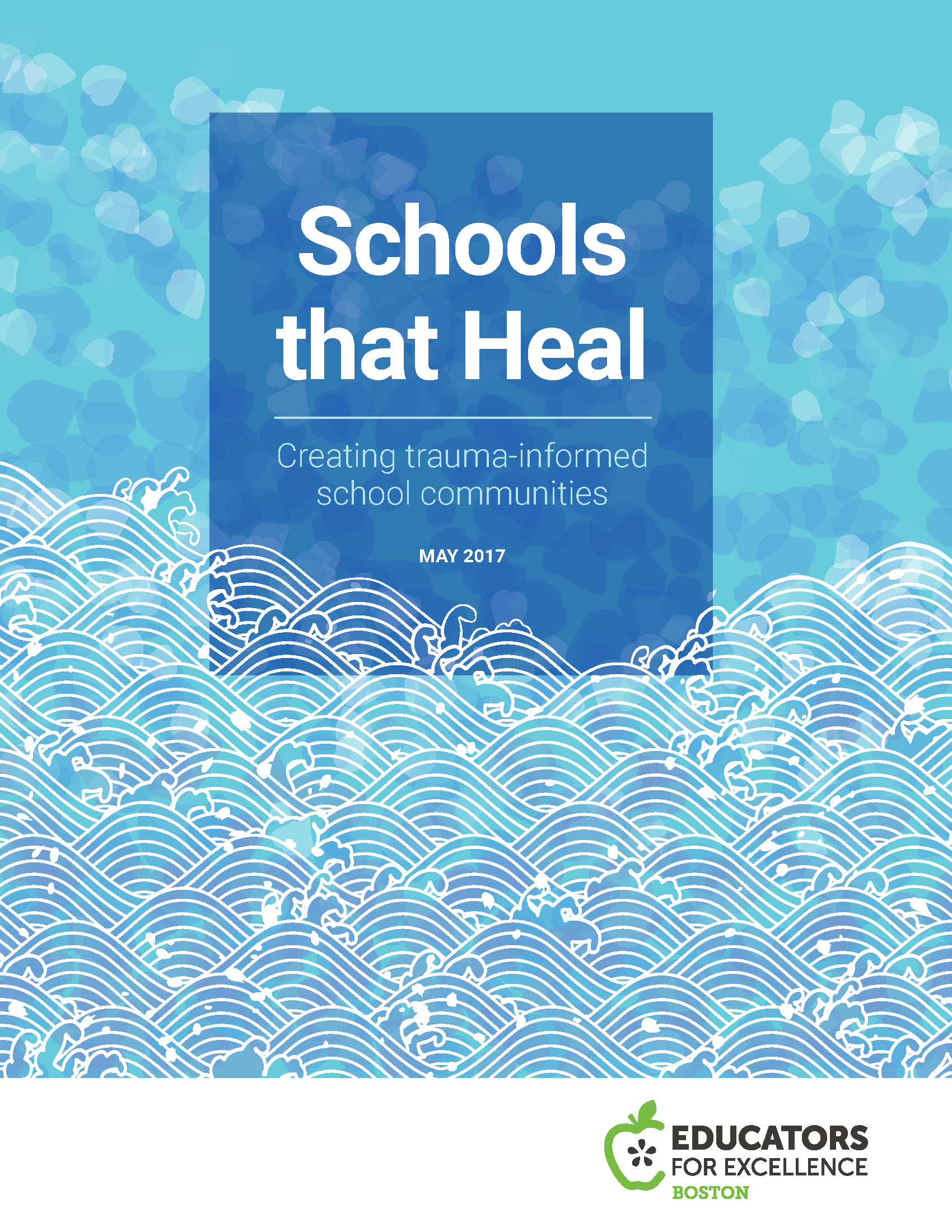
Schools that Heal
Creating trauma-informed school communities
May 2017

We know from our classroom experiences that student trauma is far too common. When surveying our colleagues across Boston, 91 percent of educators reported that student trauma is a challenge in their schools. And, research confirms our observations: between half and two-thirds of all school-aged children experience trauma.
The impact of trauma on the brain disrupts memory, organizational skills, and comprehension. In our classrooms, this means that it is more often difficult for our students who have experienced trauma to complete even simple tasks, such as taking notes or recalling information. Coping with trauma also affects students’ ability to build trusting relationships with their peers and adults, as the stress can cause students to feel unsafe or triggers fight-or-flight responses from seemingly ordinary interactions, such as behavioral corrections.
In order to create schools that foster student resiliency, we must deepen practitioner competencies, cultivate a trauma-informed community, and provide schools with the needed resources.
Recommendations
- Prioritize professional development of school-based staff in trauma-informed practices by developing standards on trauma-informed competencies.
- Equip school leaders with the resources to facilitate their schools’ shift to trauma-informed practices.
- Support educators’ learning opportunities by creating a district-wide professional learning network focused on trauma-informed teaching.
- Assist educators in implementing culturally competent behavioral interventions by providing anti-bias training.
- Set a district-wide vision for a trauma-informed school community.
- Designate trauma-informed teacher-leaders on School Support Teams to ensure that school culture is strengthened using a trauma-informed lens.
- Empower families and community members with training to understand the impact of trauma on students’ learning and behavior.
- Provide learning opportunities on trauma to educators as a required component of all preparation and re-certification programs.
- Establish a statewide minimum school counselor-to-student ratio of 1:250 and a school psychologist-to student ratio of 1:700.
- Create a statewide school funding structure that is responsive to the increased cost of educating vulnerable student populations.
About the Teacher Action Team
We are a team of eight teachers who met over the course of four months to propose research-based supports for students with trauma. We reviewed research on trauma, surveyed our colleagues across Boston to hear their insights and recommendations, conducted focus groups, and engaged in important discussions about diversity and inclusion in order to write policy recommendations for how to best support students with trauma.
Swapna Bolleboina Special Education Teacher, Higginson-Lewis K-8
Nina Leuzzi Kindergarten Teacher, Bridge Boston Charter School
Julia MacEwan School Site Coordinator, Samuel Mason Elementary School
Antonelli Mejia Student Support Counselor, Fenway High School
Kayla Morse Second Grade Teacher, Oliver Wendell Holmes Elementary School
Stephanie Pottinger Science Teacher, Richard Murphy K-8 School
Alycia Steelman Special Education Teacher, Dearborn 6-12 STEM Academy
Abigail Van Dam Special Education Teacher, UP Academy Holland